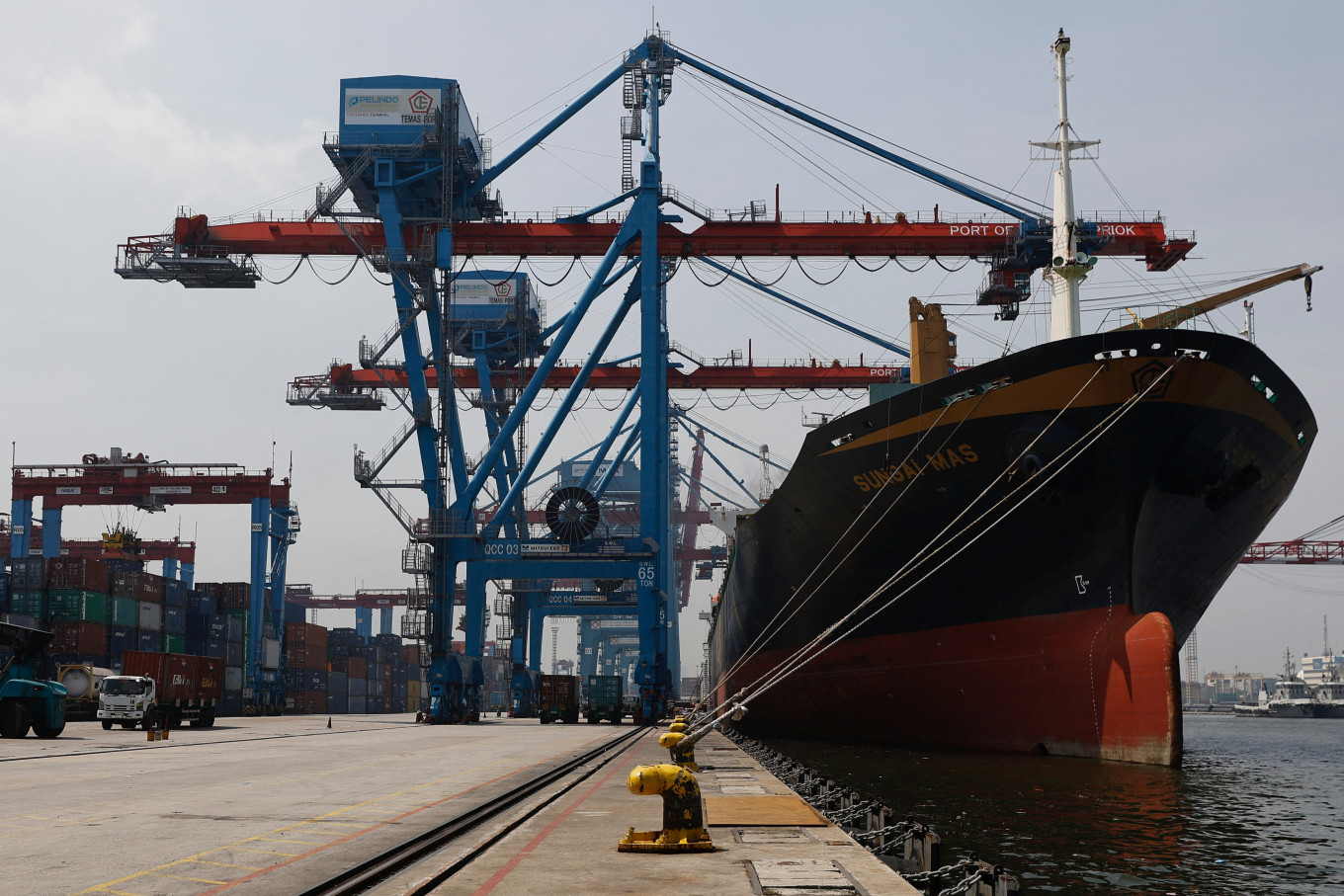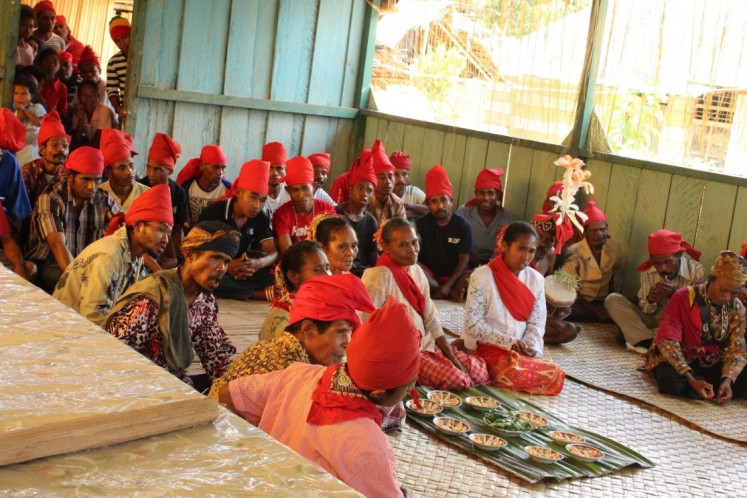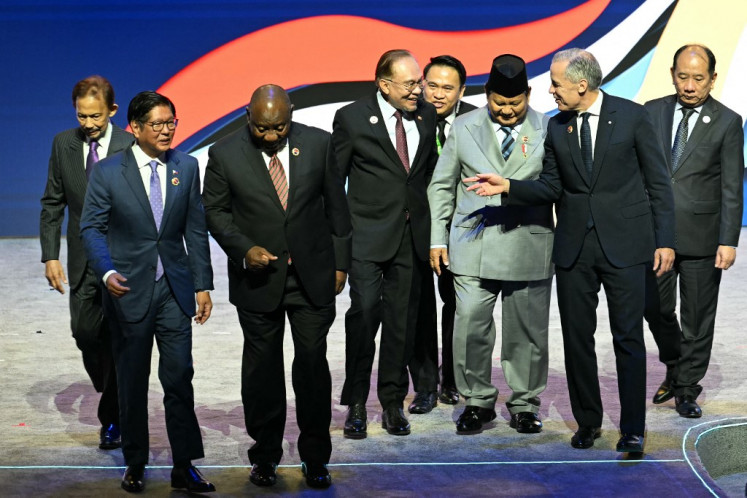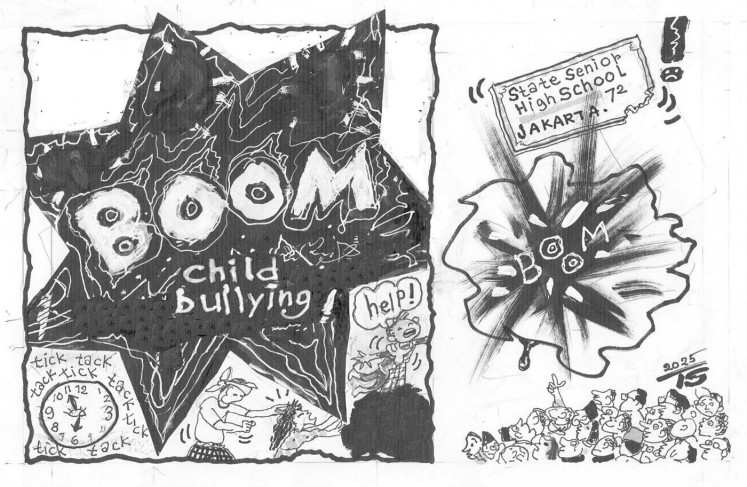Popular Reads
Top Results
Can't find what you're looking for?
View all search resultsPopular Reads
Top Results
Can't find what you're looking for?
View all search resultsCelebrating success, embracing challenges: The future of AEC
The elimination of tariffs on 98 percent of goods under ATIGA, coupled with greater free trade agreement utilization, further improved competitiveness for regional producers and exporters.
Change text size
Gift Premium Articles
to Anyone
A
s ASEAN embarks on its journey toward 2045 with the launch of the new “ASEAN 2045: Our Shared Future and its Strategic Plans”, we are reminded of Vincent Van Gogh's words: "Great things are done by a series of small things brought together."
This sentiment aptly captures ASEAN's approach, where decades of steady, collective progress have laid the robust foundation for the establishment of the ASEAN community.
The aspiration to march as one community is not new. Ten years ago, ASEAN leaders set a strategic course for the next phase of economic integration: building an integrated, resilient and inclusive ASEAN economy that drives sustainable growth, fuels innovation and strengthens the region’s global economic standing. The ASEAN Economic Community (AEC) Blueprint 2025, adopted alongside the APSC and ASCC Blueprints in 2015, served as the crucial instrument for this ambition.
The results of this integration are truly remarkable, with tangible gains visible across ASEAN’s economic indicators, particularly in trade and investment. Between 2015 and 2024, ASEAN’s gross domestic product soared from US$2.5 trillion to $3.9 trillion—an impressive average annual growth rate of 5.1 percent.
Total merchandise trade climbed from $2.3 trillion to $3.8 trillion, while foreign direct investment nearly doubled, rising from $115.4 billion to $226.0 billion. Even services trade reached a record $1.3 trillion, underscoring the region’s competitiveness in digital services, logistics, finance and tourism.
Intra-ASEAN flows underscore the region’s resilience and complementarity. Intraregional trade has consistently anchored ASEAN’s economic dynamism, averaging 22.1 percent of total merchandise trade between 2016 and 2024.
On the investment side, intra-ASEAN inflows reached $31.5 billion in 2024, making up 13.9 percent of total investment. This positions ASEAN as the second-largest FDI source after the United States at 18.6 percent. Beyond resilience, this trend highlights the deepening of regional value chains and reinforces ASEAN’s role as an engine of growth.
While global trends and domestic policies played significant roles, evidence suggests that ASEAN’s collective actions under the AEC Blueprint 2025 were decisive drivers. Strategic agreements are estimated to have contributed to a 5 percent uplift in GDP, equivalent to $1.1 trillion in additional output according to Boston Consulting Group.
These coordinated efforts also accounted for 11 percent ($3.3 trillion) in added trade value and an 8 percent increase in investment over the past decade. Notably, ASEAN achieved these gains while global FDI flows grew by only 4 percent, signaling robust investor confidence in the region’s integrated market.
The benefits of economic integration extend well beyond headline figures. Boston Consulting Group further shows us that at the enterprise level, AEC initiatives have bolstered productivity, resulting in $340 in additional output per worker. Employment rose by 1 percent, creating 4 million new jobs, while wages increased by 5 percent, adding an average of $16 per month to workers’ income. Female workforce participation reached 66 percent, among the highest in emerging economies.
For the business community, the Blueprint’s focus on trade facilitation and regulatory reform has created a more predictable and efficient environment. Initiatives like the ASEAN Single Window, the ASEAN Customs Transit System and the Harmonized Tariff Nomenclature have enabled faster, cheaper and more predictable movement of goods.
For example, customs clearance times have been reduced from 14 days to just 3, resulting in significantly lower costs and faster market access. One regional e-commerce firm reported a 25 percent increase in cross-border sales, while other companies cited cost savings of up to 40 percent because of the elimination of repetitive procedures.
The elimination of tariffs on 98 percent of goods under ATIGA, coupled with greater free trade agreement utilization, further improved competitiveness for regional producers and exporters. Cumulatively, these initiatives are estimated to have driven a $540 billion uplift in intra-ASEAN trade and an additional $1.4 trillion in extra-ASEAN trade, especially with RCEP partners.
ASEAN’s commitment to digital transformation has rapidly accelerated over the past decade. With interconnected digital payment systems, booming e-commerce platforms, increased mobile connectivity and its leading role in global tech supply chains, the region is set to unleash a $2 trillion digital economy by 2030. This ambitious goal will be underpinned by the meticulously negotiated ASEAN Digital Economy Framework Agreement (DEFA), designed to harmonize digital regulations. Equally impressive is the current focus on establishing a region-wide unique business identification number (UBIN). This initiative is expected to foster trust and ensure interoperability, vital for scaling up cross-border digital transactions.
Another hallmark of recent success is ASEAN’s thriving tourism industry. Despite a sharp drop to 2.9 million tourist arrivals in 2021, ASEAN swiftly adapted. Enhanced transport integration and widespread digital payment adoption have encouraged tourists to explore beyond single borders, turning regional travel into a seamless experience.
These coordinated efforts fueled a dramatic rebound, with tourist arrivals soaring to 127.1 million last year, underscoring ASEAN’s enduring appeal and adaptability.
Despite these impressive achievements, significant challenges and opportunities remain. One of the most pressing is the need to embed sustainability more deeply into ASEAN’s economic growth model. Over the past decade, the region has seen increased carbon intensity but only marginal growth in the share of renewable energy.
These trends underscore the urgency of integrating sustainable principles into ASEAN’s forward-looking strategies, as outlined in the ASEAN Strategy for Carbon Neutrality, the Framework for Circular Economy for the AEC and the ASEAN Blue Economy Framework.
Looking back, achievements under the current blueprint have laid robust foundations for the region’s continued rise. These successes provide not only a cause for celebration but also a springboard for even greater ambitions. The recent adoption of the ASEAN Community Vision 2045 and its Strategic Plans reflect this forward-looking spirit, setting a clear agenda for building a resilient, innovative, dynamic and people-centered community.
Central to this vision is the AEC Strategic Plan 2026-2030, designed to address both immediate opportunities and long-term challenges. Recognizing the region’s evolving landscape, the plan goes beyond deepening integration. It focuses on advancing regional resilience across crucial areas such as supply chains, food security, energy stability and future-ready workforces, ensuring ASEAN remains adaptable and competitive in a rapidly changing world.
As ASEAN moves forward, it is essential to build on the momentum of past achievements while remaining vigilant to emerging gaps and challenges. The commitment to continuous improvement and inclusive progress will be key to shaping a more robust and sustainable AEC, one that delivers lasting benefits to businesses and communities across the region and secures ASEAN’s place as a leading force in the global economy.
***
The writer is deputy ASEAN secretary-general for ASEAN Economic Community (AEC). The views expressed are personal.











